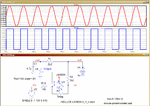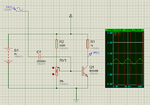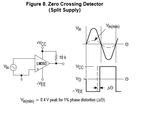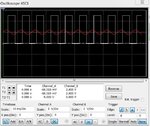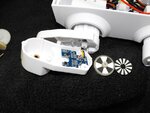rompelstilchen
Full Member level 2
hello,
i have a 0.25v peak to peak sine with a 2.2Vdc (coming out of an ir detector, in a self made wheel encoder)
and i need to turn this to ttl mfor a microcontroller
i used a shmitt trigger, but the signal is so small, that it does not work
so i thought using a comparator (lm393, but the minimum voltage had to be 0.4v)
so i wanted to use a transistor, but as there are infos of how to calc values to amplify a signal
there is nothing about turning a small sine wave to TTL
i guess i have to amplify the signal so it clips, but what value for the input capacitor and the surrounding resistors ?
also the whole thing has to be small so i need to use smd (something like BC846/7/8...)
anyone can enlight me ?
appreciate
i have a 0.25v peak to peak sine with a 2.2Vdc (coming out of an ir detector, in a self made wheel encoder)
and i need to turn this to ttl mfor a microcontroller
i used a shmitt trigger, but the signal is so small, that it does not work
so i thought using a comparator (lm393, but the minimum voltage had to be 0.4v)
so i wanted to use a transistor, but as there are infos of how to calc values to amplify a signal
there is nothing about turning a small sine wave to TTL
i guess i have to amplify the signal so it clips, but what value for the input capacitor and the surrounding resistors ?
also the whole thing has to be small so i need to use smd (something like BC846/7/8...)
anyone can enlight me ?
appreciate
